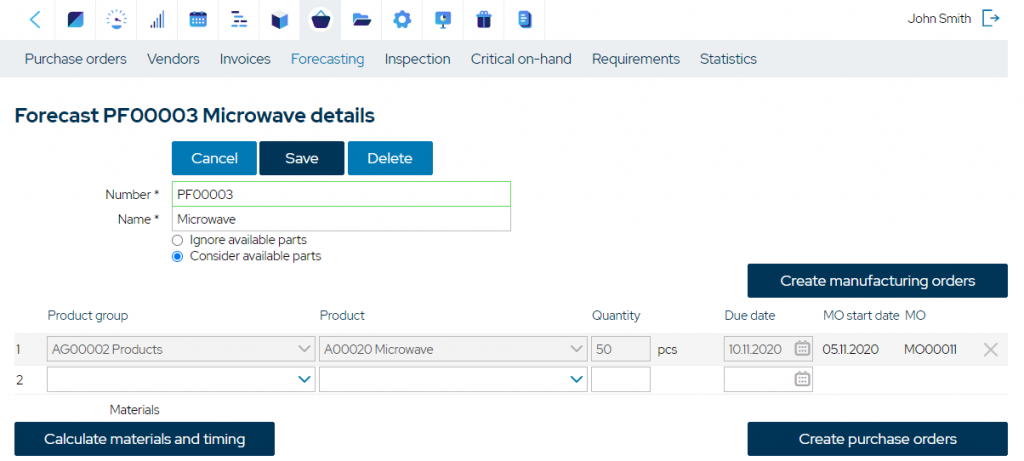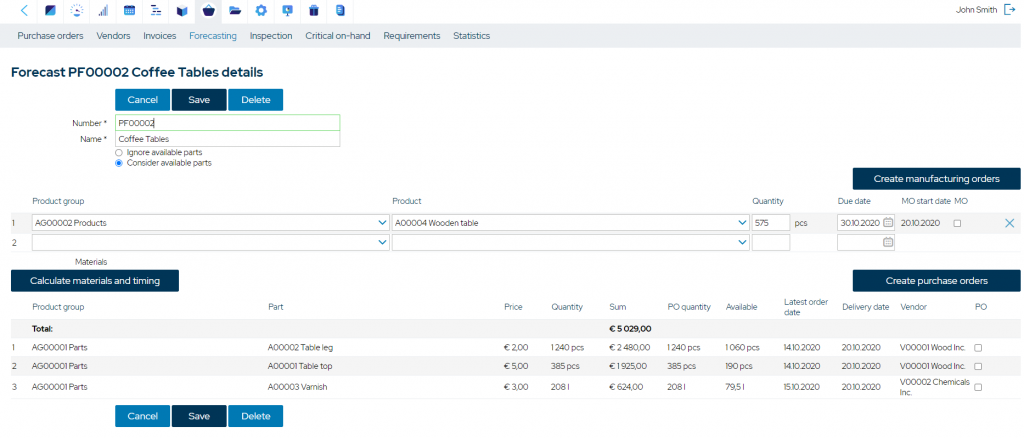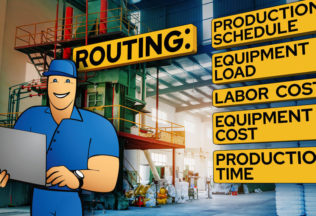What Is Demand Forecasting and What Can MRP Software Do With It?
Demand forecasting could be the key to a business’s future. But how does it work and how could it be leveraged in a way that would be most beneficial?

You can also listen to this article:
What is Demand Forecasting?
Demand Forecasting is a process whereby companies predict the demand for products. These estimations of future demand anticipate customer behavior and purchase decisions based on both historical data as well as other inputs from across the organization.
Understanding what to manufacture goes beyond planning the production floor. Of course, there are sales and marketing efforts to inform people of products and collect sales dollars from them. But another important endeavor for any manufacturing company is centered upon demand forecasting.
Demand Forecasting is important to any operation because it helps leaders and decision-makers determine the best strategy for operating their business and in planning production to meet demand.
Demand forecasting is important because:
- It helps plan budgets and negotiate supplier contracts. By predicting future demand, a factory can set strategies and develop a transparent and manageable supply chain system.
- It helps improve inventory turns and optimize inventory. With an accurate demand plan, companies can increase the “turns” on their inventory. This allows the business to run with the minimal amount required to ensure production yet prevent stockouts. This frees up cash flow and working capital as well as reduces holding costs – both key concerns for small and medium-sized businesses (SMB).
- It helps identify constraints to supply and manage bottlenecks, and proactively decide on tradeoffs. By identifying constraints early, factories can develop plans to manage critical bottlenecks or understand and decide upon tradeoffs.
How Demand Forecasting works
Demand Forecasting works by pulling in data from across the operation. This may include data from production, sales, scheduling, marketing, and finance. These variables are weighed against performance expectations historically to gauge where demand will be over time.
Plans may range from a few weeks to a few months and even years for long-range forecasting. However, the longer the timeframe, the less accurate they become.
Data for Demand Forecasting is gathered in several ways:
History
One of the most common ways to assess demand is through consumption-based planning.
This method is simple and easily implemented and requires only that a company look at past data to determine future demand.
Consumption-based systems can be manual, but they do not utilize real-time information.
If demand becomes volatile due to major disruptions, consumption-based systems may have a hard time adequately ramping up production (causing stockouts) or trouble reducing production and incoming supply (creating excess inventory and tying up cash).
Surveys
Another traditional method of gauging demand is through marketing surveys.
This means that sales and marketing staff conduct written or verbal surveys to understand current demand and to predict the demand for future or new products.
Retailers
Many factories may rely upon their retail customers to supply them with demand data. Most retailers today have sophisticated software for demand planning, and they can share this data with the factory.
This can also help companies standardize product lines to streamline efficiency or understand when and what to offer for new products.
Demand software
The growth of cloud computing has seen the rise of demand planning software. These platforms take all the inputs above and use advanced algorithms and analytics to produce demand forecasts that are based on real-time data. It allows the use of all data types and is inherently more accurate because of this.
It is also less prone to errors and tends to make supply chain issues more transparent to all stakeholders improving collaboration with vendors.
Regardless of the method, or combination of methods, demand forecasting requires that these variables be put into a forecast over time. Timeframes may vary and decision-makers must use the information to develop schedules and strategies required to ensure that production can meet demand.
How MRP software works with Demand Forecasting data
MRP software is not at odds with forecasting data or forecasting software. In fact, the two work well together.
Using demand forecast data can enhance the value of MRP software by improving efficiency, usage, inventory requirements, and purchasing functions.
Here are some examples of how MRP software works with demand forecast data:
BOM functionality
MRP software is intricately tied to Bill of Materials (BOM) management, used to calculate material requirements.
It may even use a multi-level BOM that helps lay out quantities of materials, costing, and other relevant information so the product can be produced accurately on the production floor.
Even the most general forecasting methods use specific finished goods forecasts that can be matched to a BOM, and then “exploded” to all required parts which need to be procured.
Example:
If a manufacturer of microwaves forecasts finished goods for a specific model, the MRP software will use BOMs and routings to ensure that model is made according to forecast, at the right time, and in the right quantities.
In case a forecasting software is used, then the two help to make sure that the supply chain, production plan, and expected demand match.
This can be done even with multi-level BOMs down to the last screw, bolt, and hinge so that the factory floor can manufacture efficiently.

Date of order
BOM explosion results in total materials requirements when rolled in with sales data and actual orders.
Forecasting data can be applied to help understand the date that materials need to be ordered, and not only to produce the current orders with material on-hand.
MRP software can also calculate purchase requirements considering already available material, and even material which is on order but not yet received.
By using MRP software with forecast data, the optimum order date for materials can be derived to keep production running smoothly.
Example:
If the manufacturing of 500 coffee tables per month is required for the current order backlog, then a procurement schedule is produced, which allows running at that rate.
However, if the forecast shows demand signals due to a holiday season that point to a total demand of 575 units per month, 75 more, then MRP software can generate additional purchase requirements for materials, and tell you when these must be ordered.

Material arrival
One advantage demand forecasting gives to MRP software is in the arrival of material.
Supply chain management is an intricate balance of lead times. And when ordering materials based on a demand forecast, a complete BOM may have wildly variable lead times for its components.
Using demand forecast data helps MRP software plan production floor activities to leverage and optimize these delivery dates.
Example:
For a make-to-stock product such as headphones, certain components such as shell, nuts, bolts, and screws may come in locally on a short lead time, while electronic components may come from overseas on a much longer lead time of weeks and months.
Having the correct demand forecast data allows managers to plan for the arrival of short lead time material closer to the delivery date of longer lead time material.
This allows MRP software to produce production schedules to take capacity, labor, and inventory into account and to order materials at the right velocity to match delivery lead time.
Conclusion
Demand forecasting is a useful tool that can help businesses attain optimal inventory levels, efficient purchasing practices, and overall better supply chain management capabilities.
When used in conjunction with MRP software, it can improve the efficiency and cash flow of your business by providing the necessary functions to utilize the data and use it to plan production better.
By making the supply chain more transparent, it could also allow for better negotiation terms with suppliers.
You may also like: 5 Tips for Making Material Planning More Effective




